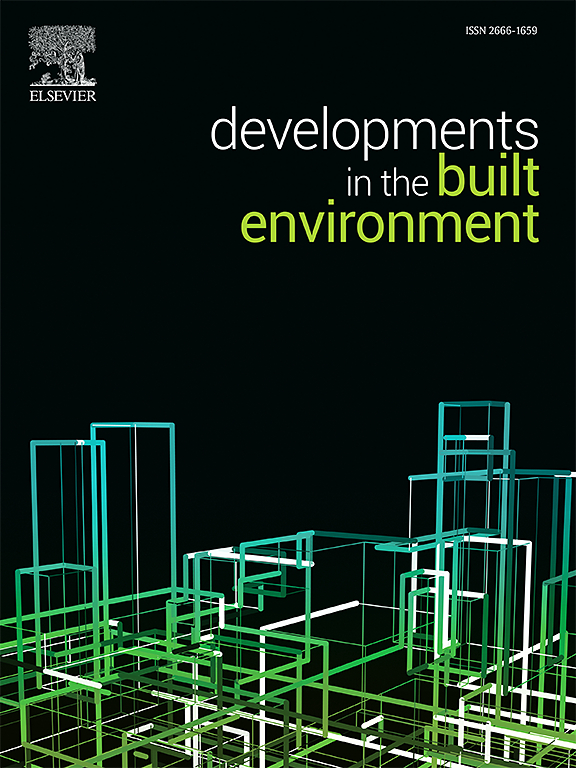一种评估BIPV系统循环性和环境可持续性的综合方法
IF 8.2
2区 工程技术
Q1 CONSTRUCTION & BUILDING TECHNOLOGY
引用次数: 0
摘要
建筑行业向可持续生产模式的转变需要强有力的方法来评估环境绩效和产品循环性。本研究提出了一个结合生命周期评估(LCA)和循环度评估(CA)的综合框架来评估六个建筑集成光伏(BIPV)系统。该框架通过结构化的六阶段流程制定,将基于生命周期的指标和基于循环的指标合并在一起,以克服单独使用每种方法的局限性。结果表明,这两种方法都不能单独提供全面的评估,强调了整合的价值。由于循环指标的简单性,它们在早期设计阶段特别有效,而LCA在后期阶段对于验证策略和优化性能至关重要。该方法通过提供对关键绩效指标的见解来支持循环建筑的创新,为更可持续的建筑合理解决方案做出贡献。总的来说,这项工作推进了CA和LCA的集成,提供了实用的建议,并使未来在复杂系统评估中能够复制。本文章由计算机程序翻译,如有差异,请以英文原文为准。
An integrated methodology for assessing circularity and environmental sustainability in BIPV systems
The construction sector's shift toward sustainable production models calls for robust methods to assess both environmental performance and product circularity. This study presents an integrated framework combining Life Cycle Assessment (LCA) and Circularity Assessment (CA) to evaluate six Building-Integrated Photovoltaic (BIPV) systems. Developed through a structured six-phase process, the framework merges life cycle-based and circularity-based indicators to overcome the limitations of using each method in isolation. The results show that neither approach alone offers a comprehensive assessment, underscoring the value of integration. Circularity indicators are particularly effective in early design phases due to their simplicity, while LCA is crucial in later stages for validating strategies and optimizing performance. The methodology supports innovation in circular construction by providing insights into key performance indicators, contributing to more sustainable architecturally sound solutions. Overall, this work advances the integration of CA and LCA, offering practical recommendations and enabling future replication in complex system evaluations.
求助全文
通过发布文献求助,成功后即可免费获取论文全文。
去求助
来源期刊

Developments in the Built Environment
Multiple-
CiteScore
7.40
自引率
1.20%
发文量
31
审稿时长
22 days
期刊介绍:
Developments in the Built Environment (DIBE) is a recently established peer-reviewed gold open access journal, ensuring that all accepted articles are permanently and freely accessible. Focused on civil engineering and the built environment, DIBE publishes original papers and short communications. Encompassing topics such as construction materials and building sustainability, the journal adopts a holistic approach with the aim of benefiting the community.
 求助内容:
求助内容: 应助结果提醒方式:
应助结果提醒方式:


